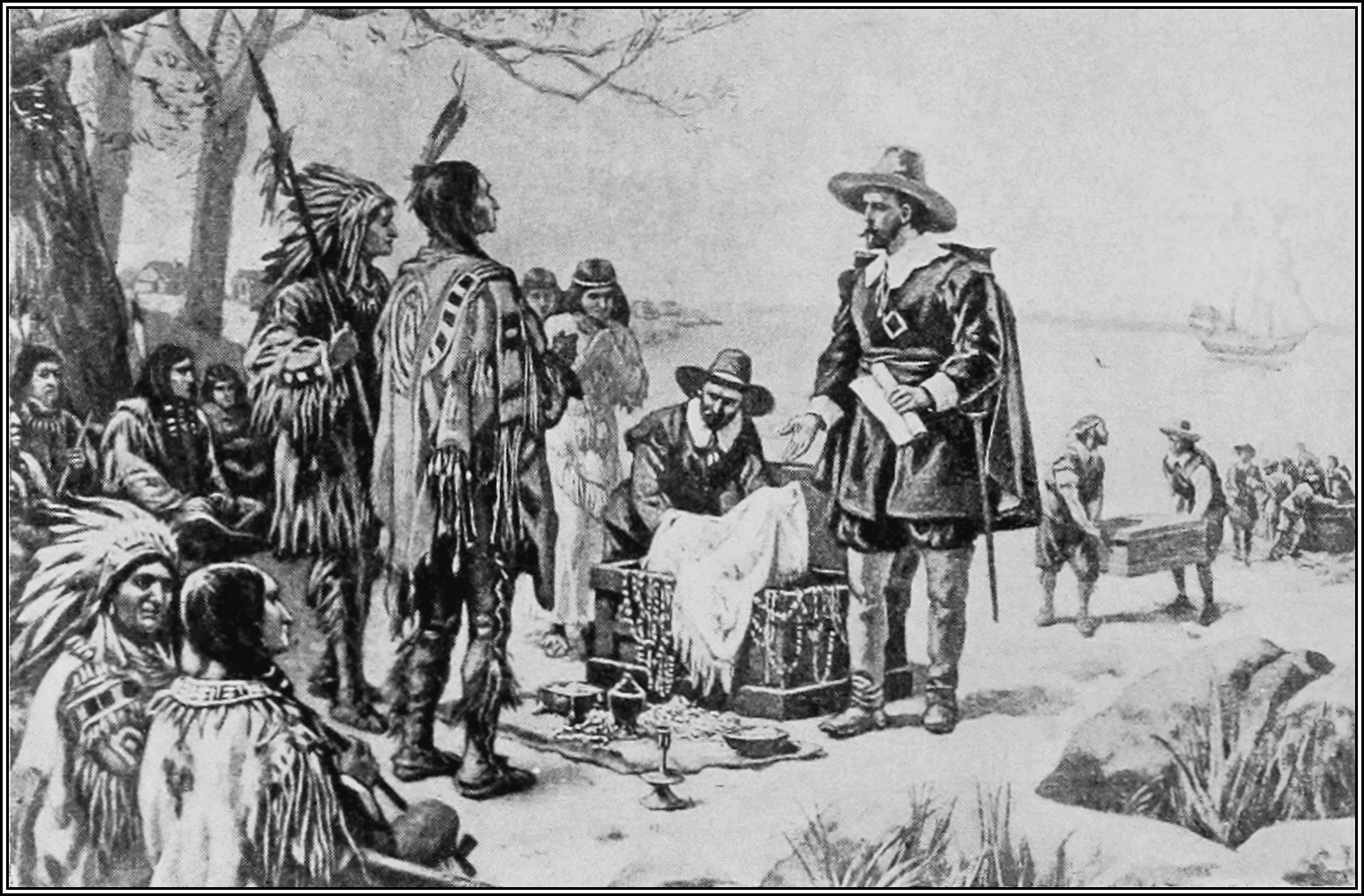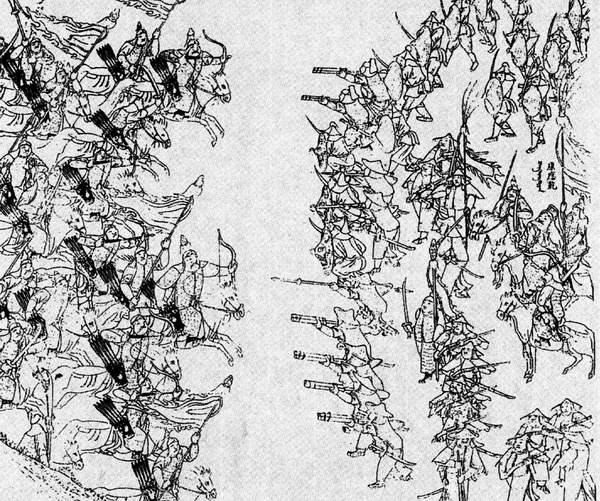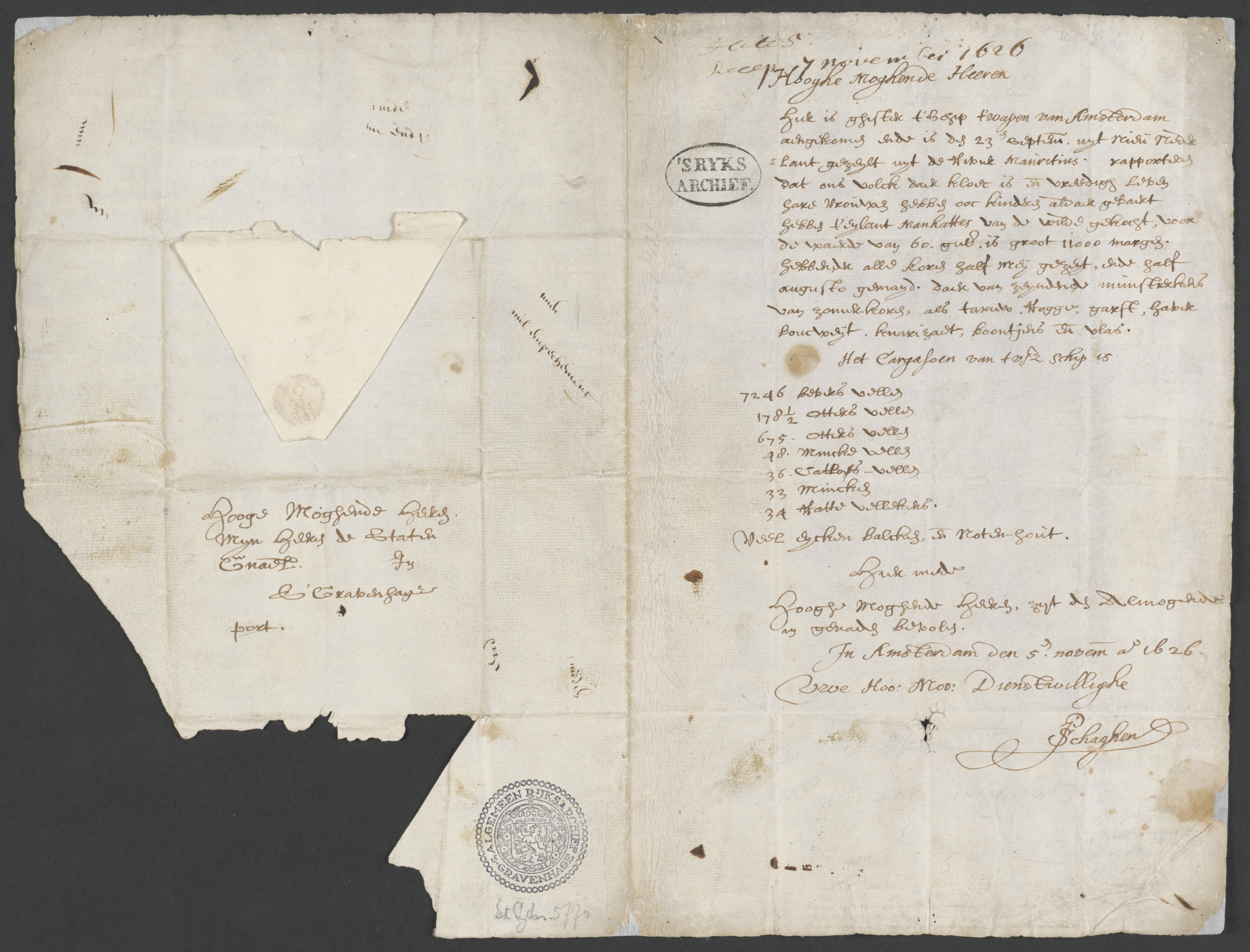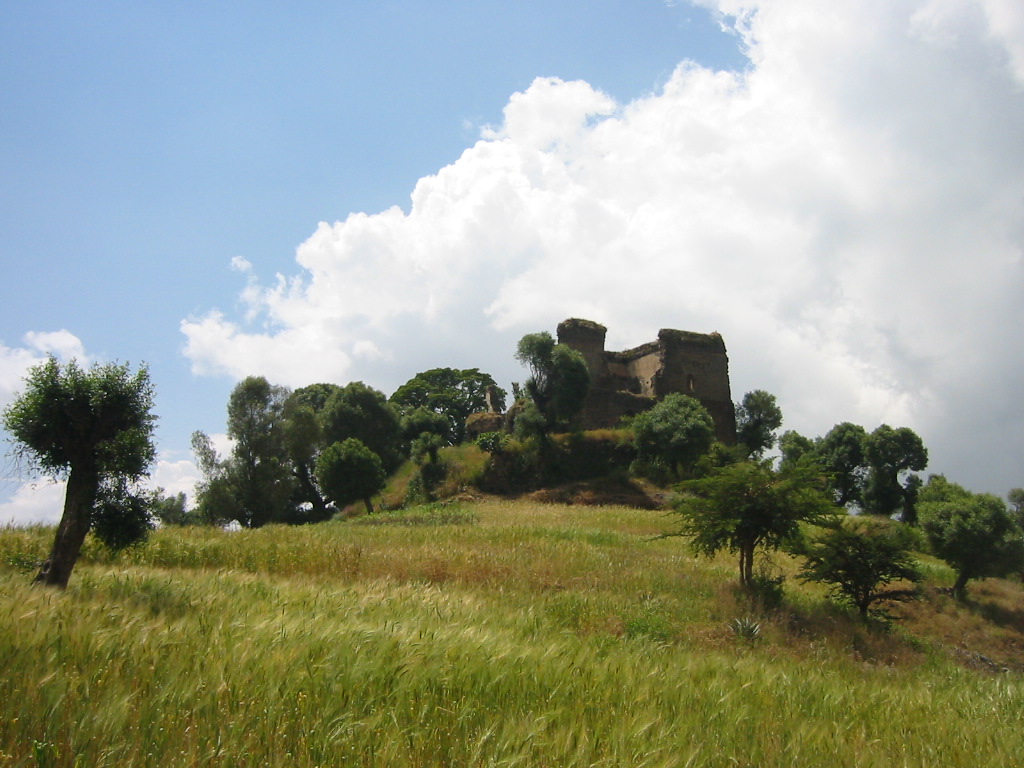|
1626
Events January–March * January 7 – Polish–Swedish War (1625–1629), Polish-Swedish War: Battle of Wallhof in Latvia – Gustavus Adolphus, King of Sweden, defeats a Polish army. * January 9 – Peter Minuit sails from Texel Island for America's New Netherland colony, with two ships of Dutch emigrants. * February 2 – King Charles I of England is crowned, but without his wife, Henrietta Maria, who declines to participate in a non-Catholic ceremony. * February 5 – The Huguenot rebels and the French government sign the Treaty of Paris (1626), Treaty of Paris, ending the second Huguenot rebellion. * February 10 – Battle of Ningyuan: In Xingcheng in China, after an 8-day battle, Ming dynasty commander Yuan Chonghuan defeats the much larger force of Manchu people, Manchu leader Nurhaci, who dies soon after and is succeeded by Huang Taiji. * February 11 – Emperor Susenyos of Ethiopia and Patriarch Afonso Mendes declare the primacy ... [...More Info...] [...Related Items...] OR: [Wikipedia] [Google] [Baidu] |
Nurhaci
Nurhaci (14 May 1559 – 30 September 1626), also known by his temple name as the Emperor Taizu of Qing, was the founding khan of the Jurchen people, Jurchen-led Later Jin (1616–1636), Later Jin dynasty. As the leader of the House of Aisin-Gioro, Nurhaci reorganized and united various Jurchen tribes (the later "Manchu people, Manchu"), consolidated the Eight Banners military system, and eventually launched attacks on both the Ming dynasty, Ming and Joseon dynasties. His conquest of Ming dynasty's northeastern Liaodong region laid the groundwork for the Qing conquest of the Ming by his descendants, who proclaimed the Qing dynasty in 1636. He is also generally credited with ordering the creation of a new written script for the Manchu language based on the Mongolian script, Mongolian vertical script. Name and titles Nurhaci is written as in Manchu language. Some suggest that the meaning of the name in the Manchu language is "the skin of a wild boar". Another explanation is "brav ... [...More Info...] [...Related Items...] OR: [Wikipedia] [Google] [Baidu] |
Peter Minuit
Peter Minuit (French language, French: ''Pierre Minuit'', Dutch language, Dutch: ''Peter Minnewit''; 1580 – August 5, 1638) was a Walloons, Walloon merchant and politician who was the 3rd Director of New Netherland, Director of the Dutch North American colony of New Netherland from 1626 until 1631, and 3rd Governor of New Netherland. He founded the Sweden, Swedish colony of New Sweden on the Delaware Peninsula in 1638. Minuit was born in Wesel, in present-day northwestern Germany. He is generally credited with orchestrating the purchase of Manhattan Island for the Dutch West India Company from representatives of the Lenape, Native Americans in the United States, the area's indigenous people. Manhattan later became the site of the Dutch city of New Amsterdam, and the borough of Manhattan of modern-day New York City. A letter written by Dutch merchant Peter Schaghen to directors of the Dutch East India Company stated that Manhattan was purchased for "60 Guilder, guilders worth o ... [...More Info...] [...Related Items...] OR: [Wikipedia] [Google] [Baidu] |
Battle Of Wallhof
Battle of Wallhof (, also known as Battle of Walmojza) was fought between Sweden and the Polish-Lithuanian Commonwealth on 17 January 1626. History Swedish forces consisting of 4,900 men (2,100 of them cavalry) with six guns under Gustavus II Adolphus ambushed and took by surprise a Polish-Lithuanian force of 2,000–7,000 men (sources differ) with three guns under Jan Stanisław Sapieha. Polish-Lithuanian casualties amounted to between 500 and 1,000 or between 1,000 and 2,300 killed, wounded, or captured;Wallhof i Nordisk familjebok (2:a upplagan, 1921) their commander collapsed from mental illness after this defeat.The Swedish king Gustav claimed: "not a single man is missing; everyone is where they should be" which is hard to believe, but to have suffered very small casualties is most likely true. In the battle Gustavus Adolphus' reformed tactics, utilising close cooperation between infantry and cavalry, were tried for the first time. It was also the first time the Swedis ... [...More Info...] [...Related Items...] OR: [Wikipedia] [Google] [Baidu] |
Battle Of Ningyuan
The Battle of Ningyuan () took place between the Ming dynasty and the Later Jin (1616–1636), Later Jin dynasty in 1626. The Later Jin had been waging war on the Ming for several years, and their leader Nurhaci had deemed Xingcheng, Ningyuan to be a suitable target for his attack, in part due to advice from a Ming defector, Li Yongfang. Later Jin failed to take the city and Nurhaci was wounded in the assault, dying eight months later. The Ming emerged victorious, marking a temporary resurgence of the Ming army after an eight-year-long series of defeats. Background The Ming had suffered a series of defeats against the Jurchens prior to 1626 and lost the key city of Shenyang in 1621 and the port city of Lüshunkou District, Lüshun in 1625. Part of the Ming army's new strategy of defense was to develop Ningyuan into a military stronghold. Yuan Chonghuan, with the support of Sun Chengzong, was assigned the task of conducting a major strengthening of Ningyuan's defenses in anticipa ... [...More Info...] [...Related Items...] OR: [Wikipedia] [Google] [Baidu] |
New Netherland
New Netherland () was a colony of the Dutch Republic located on the East Coast of what is now the United States. The claimed territories extended from the Delmarva Peninsula to Cape Cod. Settlements were established in what became the states of New York, New Jersey, Delaware, and Connecticut, with small outposts in Pennsylvania and Rhode Island. The colony was originally conceived by the Dutch West India Company (GWC) in 1621 to capitalize on the North American fur trade. Settlement initially stalled because of policy mismanagement by the GWC and conflicts with Native Americans. The settlement of New Sweden by the Swedish South Company encroached on its southern flank, while its eastern border was redrawn to accommodate the English colonies of an expanding New England Confederation. The colony experienced dramatic growth during the 1650s and became a major center for trade across the North Atlantic. The Dutch conquered New Sweden in 1655 but, during the Second Anglo-Dut ... [...More Info...] [...Related Items...] OR: [Wikipedia] [Google] [Baidu] |
Charles I Of England
Charles I (19 November 1600 – 30 January 1649) was King of Kingdom of England, England, Kingdom of Scotland, Scotland, and Kingdom of Ireland, Ireland from 27 March 1625 until Execution of Charles I, his execution in 1649. Charles was born into the House of Stuart as the second son of King James VI of Scotland, but after his father inherited the English throne in 1603, he moved to England, where he spent much of the rest of his life. He became heir apparent to the kingdoms of England, Scotland, and Ireland in 1612 upon the death of his elder brother, Henry Frederick, Prince of Wales. An unsuccessful and unpopular attempt to marry him to Infanta Maria Anna of Spain culminated in an eight-month visit to Habsburg Spain, Spain in 1623 that demonstrated the futility of the marriage negotiation. Two years later, shortly after his accession, he married Henrietta Maria of France. After his accession in 1625, Charles quarrelled with the English Parliament, which sought to curb his ro ... [...More Info...] [...Related Items...] OR: [Wikipedia] [Google] [Baidu] |
Henrietta Maria
Henrietta Maria of France (French language, French: ''Henriette Marie''; 25 November 1609 – 10 September 1669) was List of English royal consorts, Queen of England, List of Scottish royal consorts, Scotland and Ireland from her marriage to King Charles I of England, Charles I on 13 June 1625 until Execution of Charles I, his execution on 30 January 1649. She was the mother of Charles II of England, Charles II and James II and VII. Under a decree of her husband, she was known in England as Queen Mary, but she did not like this name and signed her letters "Henriette" or "Henriette Marie". Henrietta Maria's Roman Catholicism made her unpopular in England, and also prohibited her from being crowned in a Church of England service; therefore, she never had a coronation. She immersed herself in national affairs as English Civil War, civil war loomed, and in 1644, following the birth of her youngest daughter, Henrietta of England, Henrietta, during the height of the First English Civ ... [...More Info...] [...Related Items...] OR: [Wikipedia] [Google] [Baidu] |
Treaty Of Paris (1626)
The Treaty of Paris (1626) was a peace agreement between king Louis XIII and the Huguenots following the outbreak of the Second Huguenot rebellion and the Capture of Ré island. The Treaty of Paris was signed between the city of La Rochelle and Louis XIII on 5 February 1626, preserving religious freedom but imposing some guaranties against possible future upheavals: La Rochelle was prohibited from keeping a war fleet and had to destroy a fort in Tasdon. The contentious Fort Louis under Royal control near the western gate of the city was supposed to be destroyed "in reasonable time". Notes 1626 in France 1626 treaties Treaties of the Kingdom of France 1626 Events January–March * January 7 – Polish–Swedish War (1625–1629), Polish-Swedish War: Battle of Wallhof in Latvia – Gustavus Adolphus, King of Sweden, defeats a Polish army. * January 9 – Peter Minuit sail ... Huguenot rebellions 17th century in Paris {{Treaty-stub ... [...More Info...] [...Related Items...] OR: [Wikipedia] [Google] [Baidu] |
Gustavus Adolphus
Gustavus Adolphus (9 December N.S 19 December">Old_Style_and_New_Style_dates.html" ;"title="/nowiki>Old Style and New Style dates">N.S 19 December15946 November Old Style and New Style dates">N.S 16 November] 1632), also known in English as Gustav II Adolf or Gustav II Adolph, was King of Sweden from 1611 to 1632, and is credited with the rise of Swedish Empire, Sweden as a great European power (). During his reign, Sweden became one of the primary military forces in Europe during the Thirty Years' War, helping to determine the political and religious balance of power in Europe. He was formally and posthumously given the name Gustavus Adolphus the Great (; ) by the Riksdag of the Estates in 1634. He is often regarded as one of the greatest military commanders in modern history, with use of an early form of combined arms. His most notable military victory was the Battle of Breitenfeld in 1631. With his resources, logistics, and support, Gustavus Adolphus was positioned to b ... [...More Info...] [...Related Items...] OR: [Wikipedia] [Google] [Baidu] |
Huang Taiji
Hong Taiji (28 November 1592 – 21 September 1643), also rendered as Huang Taiji and sometimes referred to as Abahai in Western literature, also known by his temple name as the Emperor Taizong of Qing, was the second khan of the Later Jin dynasty and the founding emperor of the Qing dynasty. He was responsible for consolidating the empire that his father Nurhaci had founded and laid the groundwork for the conquest of the Ming dynasty, although he died before this was accomplished. He was also responsible for changing the name of the Jurchens to "Manchu" in 1635, and changing the name of his dynasty from "Great Jin" to "Great Qing" in 1636. Names and titles It is unclear whether "Hong Taiji" was a title or a personal name. Written ''Hong taiji'' in Manchu, it was borrowed from the Mongolian title '' Khong Tayiji''. That Mongolian term was itself derived from the Chinese ''huang taizi'' 皇太子 ("crown prince", "imperial prince"), but in Mongolian it meant, among other th ... [...More Info...] [...Related Items...] OR: [Wikipedia] [Google] [Baidu] |
Huguenot Rebellion
The Huguenot rebellions, sometimes called the Rohan Wars after the Huguenot leader Henri, Duke of Rohan, Henri de Rohan, were a series of rebellions of the 1620s in which French people, French Calvinist Protestants (Huguenots), mainly located in southwestern France, revolted against royal authority. The uprising occurred a decade after the death of Henry IV of France, Henry IV who, himself originally a Huguenot before converting to Catholicism, had protected Protestants through the Edict of Nantes. His successor Louis XIII, under the regent, regency of his Italian Catholic mother Marie de' Medici, became more intolerant of Protestantism. The Huguenots responded by establishing independent political and military structures, establishing diplomatic contacts with foreign powers, and openly revolting against central power. The Huguenot rebellions came after two decades of internal peace under Henry IV, following the intermittent French Wars of Religion of 1562–1598. First Huguenot r ... [...More Info...] [...Related Items...] OR: [Wikipedia] [Google] [Baidu] |
Susenyos Of Ethiopia
Susenyos I ( ; –1575 – 17 September 1632), also known as Susenyos the Catholic, was Emperor of Ethiopia from 1607 to 1632, and a member of the Solomonic dynasty. His throne names were Seltan Sagad and Malak Sagad III. He was the son of '' Abeto'' Fasil, as well as the grandson of ''Abeto'' Yakob and the great-grandson of Dawit II. As a result, while some authorities list Susenyos as a member of the Solomonic dynasty, others consider him—rather than his son, Fasilides—as the founder of the Gondar line of the dynasty (which is, however, ultimately a subset of the Solomonic dynasty). The life of Susenyos is known through his chronicle, written by several official writers (''sehafe te’ezaz''). The Jesuits, who were closely associated with Susenyos’s reign, also left numerous documents on their mission in Ethiopia. Manuel de Almeida, a Portuguese Jesuit who lived in Ethiopia during Susenyos reign, described the emperor as "tall with the features of a man of quality ... [...More Info...] [...Related Items...] OR: [Wikipedia] [Google] [Baidu] |








